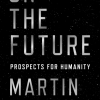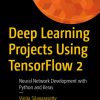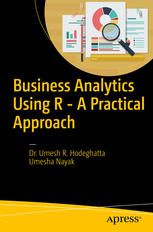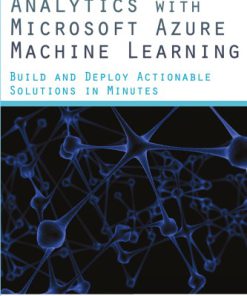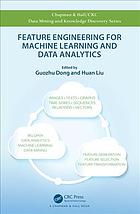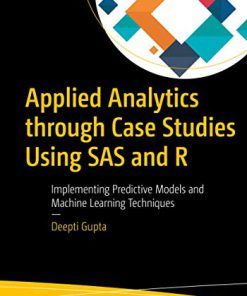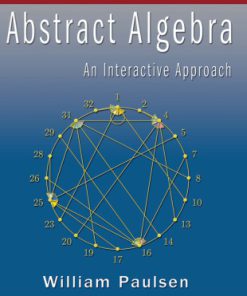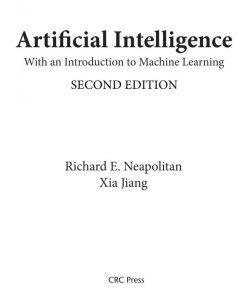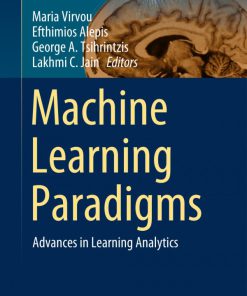Just Enough R An Interactive Approach to Machine Learning and Analytics 1st Edition by Richard Roiger 1000073560 9781000073560
$50.00 Original price was: $50.00.$25.00Current price is: $25.00.
Just Enough R An Interactive Approach to Machine Learning and Analytics 1st Edition by Richard J. Roiger – Ebook PDF Instant Download/DeliveryISBN: 1000073560, 9781000073560
Full download Just Enough R An Interactive Approach to Machine Learning and Analytics 1st Edition after payment.
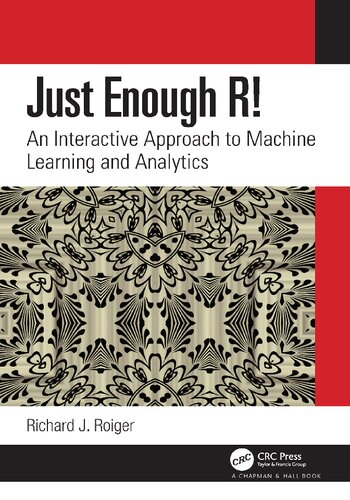
Product details:
ISBN-10 : 1000073560
ISBN-13 : 9781000073560
Author: Richard J. Roiger
Just Enough R! An Interactive Approach to Machine Learning and Analytics presents just enough of the R language, machine learning algorithms, statistical methodology, and analytics for the reader to learn how to find interesting structure in data. The approach might be called “seeing then doing” as it first gives step-by-step explanations using simple, understandable examples of how the various machine learning algorithms work independent of any programming language. This is followed by detailed scripts written in R that apply the algorithms to solve nontrivial problems with real data. The script code is provided, allowing the reader to execute the scripts as they study the explanations given in the text. Features Gets you quickly using R as a problem-solving tool Uses RStudio’s integrated development environment Shows how to interface R with SQLite Includes examples using R’s Rattle graphical user interface Requires no prior knowledge of R, machine learning, or computer programming Offers over 50 scripts written in R, including several problem-solving templates that, with slight modification, can be used again and again Covers the most popular machine learning techniques, including ensemble-based methods and logistic regression Includes end-of-chapter exercises, many of which can be solved by modifying existing scripts Includes datasets from several areas, including business, health and medicine, and science About the Author Richard J. Roiger is a professor emeritus at Minnesota State University, Mankato, where he taught and performed research in the Computer and Information Science Department for over 30 years.
Just Enough R An Interactive Approach to Machine Learning and Analytics 1st table of contents:
Chapter 1 ▪ Introduction to Machine Learning
1.1 Machine Learning, Statistical Analysis, and Data Science
1.2 Machine Learning: A First Example
1.2.1 Attribute-Value Format
1.2.2 A Decision Tree for Diagnosing Illness
1.3 Machine Learning Strategies
1.3.1 Classification
1.3.2 Estimation
1.3.3 Prediction
1.3.4 Unsupervised Clustering
1.3.5 Market Basket Analysis
1.4 Evaluating Performance
1.4.1 Evaluating Supervised Models
1.4.2 Two-Class Error Analysis
1.4.3 Evaluating Numeric Output
1.4.4 Comparing Models by Measuring Lift
1.4.5 Unsupervised Model Evaluation
1.5 Ethical Issues
1.6 Chapter Summary
1.7 Key Terms
Exercises
Chapter 2 ▪ Introduction to R
2.1 Introducing R and RStudio
2.1.1 Features of R
2.1.2 Installing R
2.1.3 Installing RStudio
2.2 Navigating RStudio
2.2.1 The Console
2.2.2 The Source Panel
2.2.3 The Global Environment
2.2.4 Packages
2.3 Where’s the Data?
2.4 Obtaining Help and Additional Information
2.5 Summary
Exercises
Chapter 3 ▪ Data Structures and Manipulation
3.1 Data Types
3.1.1 Character Data and Factors
3.2 Single-Mode Data Structures
3.2.1 Vectors
3.2.2 Matrices and Arrays
3.3 Multimode Data Structures
3.3.1 Lists
3.3.2 Data Frames
3.4 Writing Your Own Functions
3.4.1 Writing a Simple Function
3.4.2 Conditional Statements
3.4.3 Iteration
3.4.4 Recursive Programming
3.5 Summary
3.6 Key Terms
Exercises
Chapter 4 ▪ Preparing the Data
4.1 A Process Model for Knowledge Discovery
4.2 Creating a Target Dataset
4.2.1 Interfacing R with the Relational Model
4.2.2 Additional Sources for Target Data
4.3 Data Preprocessing
4.3.1 Noisy Data
4.3.2 Preprocessing with R
4.3.3 Detecting Outliers
4.3.4 Missing Data
4.4 Data Transformation
4.4.1 Data Normalization
4.4.2 Data Type Conversion
4.4.3 Attribute and Instance Selection
4.4.4 Creating Training and Test Set Data
4.4.5 Cross Validation and Bootstrapping
4.4.6 Large-Sized Data
4.5 Chapter Summary
4.6 Key Terms
Exercises
Chapter 5 ▪ Supervised Statistical Techniques
5.1 Simple Linear Regression
5.2 Multiple Linear Regression
5.2.1 Multiple Linear Regression: An Example
5.2.2 Evaluating Numeric Output
5.2.3 Training/Test Set Evaluation
5.2.4 Using Cross Validation
5.2.5 Linear Regression with Categorical Data
5.3 Logistic Regression
5.3.1 Transforming the Linear Regression Model
5.3.2 The Logistic Regression Model
5.3.3 Logistic Regression with R
5.3.4 Creating a Confusion Matrix
5.3.5 Receiver Operating Characteristics (ROC) Curves
5.3.6 The Area under an ROC Curve
5.4 Naïve Bayes Classifier
5.4.1 Bayes Classifier: An Example
5.4.2 Zero-Valued Attribute Counts
5.4.3 Missing Data
5.4.4 Numeric Data
5.4.5 Experimenting with Naïve Bayes
5.5 Chapter Summary
5.6 Key Terms
Exercises
Chapter 6 ▪ Tree-Based Methods
6.1 A Decision Tree Algorithm
6.1.1 An Algorithm for Building Decision Trees
6.1.2 C4.5 Attribute Selection
6.1.3 Other Methods for Building Decision Trees
6.2 Building Decision Trees: C5.0
6.2.1 A Decision Tree for Credit Card Promotions
6.2.2 Data for Simulating Customer Churn
6.2.3 Predicting Customer Churn with C5.0
6.3 Building Decision Trees: rpart
6.3.1 An rpart Decision Tree for Credit Card Promotions
6.3.2 Train and Test rpart: Churn Data
6.3.3 Cross Validation rpart: Churn Data
6.4 Building Decision Trees: J48
6.5 Ensemble Techniques for Improving Performance
6.5.1 Bagging
6.5.2 Boosting
6.5.3 Boosting: An Example with C5.0
6.5.4 Random Forests
6.6 Regression Trees
6.7 Chapter Summary
6.8 Key Terms
Exercises
Chapter 7 ▪ Rule-Based Techniques
7.1 From Trees to Rules
7.1.1 The Spam Email Dataset
7.1.2 Spam Email Classification: C5.0
7.2 A Basic Covering Rule Algorithm
7.2.1 Generating Covering Rules with JRip
7.3 Generating Association Rules
7.3.1 Confidence and Support
7.3.2 Mining Association Rules: An Example
7.3.3 General Considerations
7.3.4 Rweka’s Apriori Function
7.4 Shake, Rattle, and Roll
7.5 Chapter Summary
7.6 Key Terms
Exercises
Chapter 8 ▪ Neural Networks
8.1 Feed-Forward Neural Networks
8.1.1 Neural Network Input Format
8.1.2 Neural Network Output Format
8.1.3 The Sigmoid Evaluation Function
8.2 Neural Network Training: A Conceptual View
8.2.1 Supervised Learning with Feed-Forward Networks
8.2.2 Unsupervised Clustering with Self-Organizing Maps
8.3 Neural Network Explanation
8.4 General Considerations
8.4.1 Strengths
8.4.2 Weaknesses
8.5 Neural Network Training: A Detailed View
8.5.1 The Backpropagation Algorithm: An Example
8.5.2 Kohonen Self-Organizing Maps: An Example
8.6 Building Neural Networks with R
8.6.1 The Exclusive-OR Function
8.6.2 Modeling Exclusive-OR with MLP: Numeric Output
8.6.3 Modeling Exclusive-OR with MLP: Categorical Output
8.6.4 Modeling Exclusive-OR with neuralnet: Numeric Output
8.6.5 Modeling Exclusive-OR with neuralnet: Categorical Output
8.6.6 Classifying Satellite Image Data
8.6.7 Testing for Diabetes
8.7 Neural Net Clustering for Attribute Evaluation
8.8 Times Series Analysis
8.8.1 Stock Market Analytics
8.8.2 Time Series Analysis: An Example
8.8.3 The Target Data
8.8.4 Modeling the Time Series
8.8.5 General Considerations
8.9 Chapter Summary
8.10 Key Terms
Exercises
Chapter 9 ▪ Formal Evaluation Techniques
9.1 What Should Be Evaluated?
9.2 Tools for Evaluation
9.2.1 Single-Valued Summary Statistics
9.2.2 The Normal Distribution
9.2.3 Normal Distributions and Sample Means
9.2.4 A Classical Model for Hypothesis Testing
9.3 Computing Test Set Confidence Intervals
9.4 Comparing Supervised Models
9.4.1 Comparing the Performance of Two Models
9.4.2 Comparing the Performance of Two or More Models
9.5 Confidence Intervals for Numeric Output
9.6 Chapter Summary
9.7 Key Terms
Exercises
Chapter 10 ▪ Support Vector Machines
10.1 Linearly Separable Classes
10.2 The Nonlinear Case
10.3 Experimenting with Linearly Separable Data
10.4 Microarray Data Mining
10.4.1 DNA and Gene Expression
10.4.2 Preprocessing Microarray Data: Attribute Selection
10.4.3 Microarray Data Mining: Issues
10.5 A Microarray Application
10.5.1 Establishing a Benchmark
10.5.2 Attribute Elimination
10.6 Chapter Summary
10.7 Key Terms
Exercises
Chapter 11 ▪ Unsupervised Clustering Techniques
11.1 The K-Means Algorithm
11.1.1 An Example Using K-Means
11.1.2 General Considerations
11.2 Agglomerative Clustering
11.2.1 Agglomerative Clustering: An Example
11.2.2 General Considerations
11.3 Conceptual Clustering
11.3.1 Measuring Category Utility
11.3.2 Conceptual Clustering: An Example
11.3.3 General Considerations
11.4 Expectation Maximization
11.5 Unsupervised Clustering with R
11.5.1 Supervised Learning for Cluster Evaluation
11.5.2 Unsupervised Clustering for Attribute Evaluation
11.5.3 Agglomerative Clustering: A Simple Example
11.5.4 Agglomerative Clustering of Gamma-Ray Burst Data
11.5.5 Agglomerative Clustering of Cardiology Patient Data
11.5.6 Agglomerative Clustering of Credit Screening Data
11.6 Chapter Summary
11.7 Key Terms
Exercises
Chapter 12 ▪ A Case Study in Predicting Treatment Outcome
12.1 Goal Identification
12.2 A Measure of Treatment Success
12.3 Target Data Creation
12.4 Data Preprocessing
12.5 Data Transformation
12.6 Data Mining
12.6.1 Two-Class Experiments
12.7 Interpretation and Evaluation
12.7.1 Should Patients Torso Rotate?
12.8 Taking Action
12.9 Chapter Summary
People also search for Just Enough R An Interactive Approach to Machine Learning and Analytics 1st:
just enough and just in time
just enough process
just enough requirements management
just enough planning system
just enough r
Tags: Just Enough, Interactive Approach, Machine Learning, Analytics, Richard Roiger
You may also like…
Physics - General Courses
Computers - Networking
Computers - Databases
Computers - Computer Science
Feature Engineering for Machine Learning and Data Analytics First Edition Dong
Computers - Algorithms and Data Structures
Computers - Artificial Intelligence (AI)
Computers - Computer Science
Machine Learning Paradigms: Advances in Learning Analytics Maria Virvou


